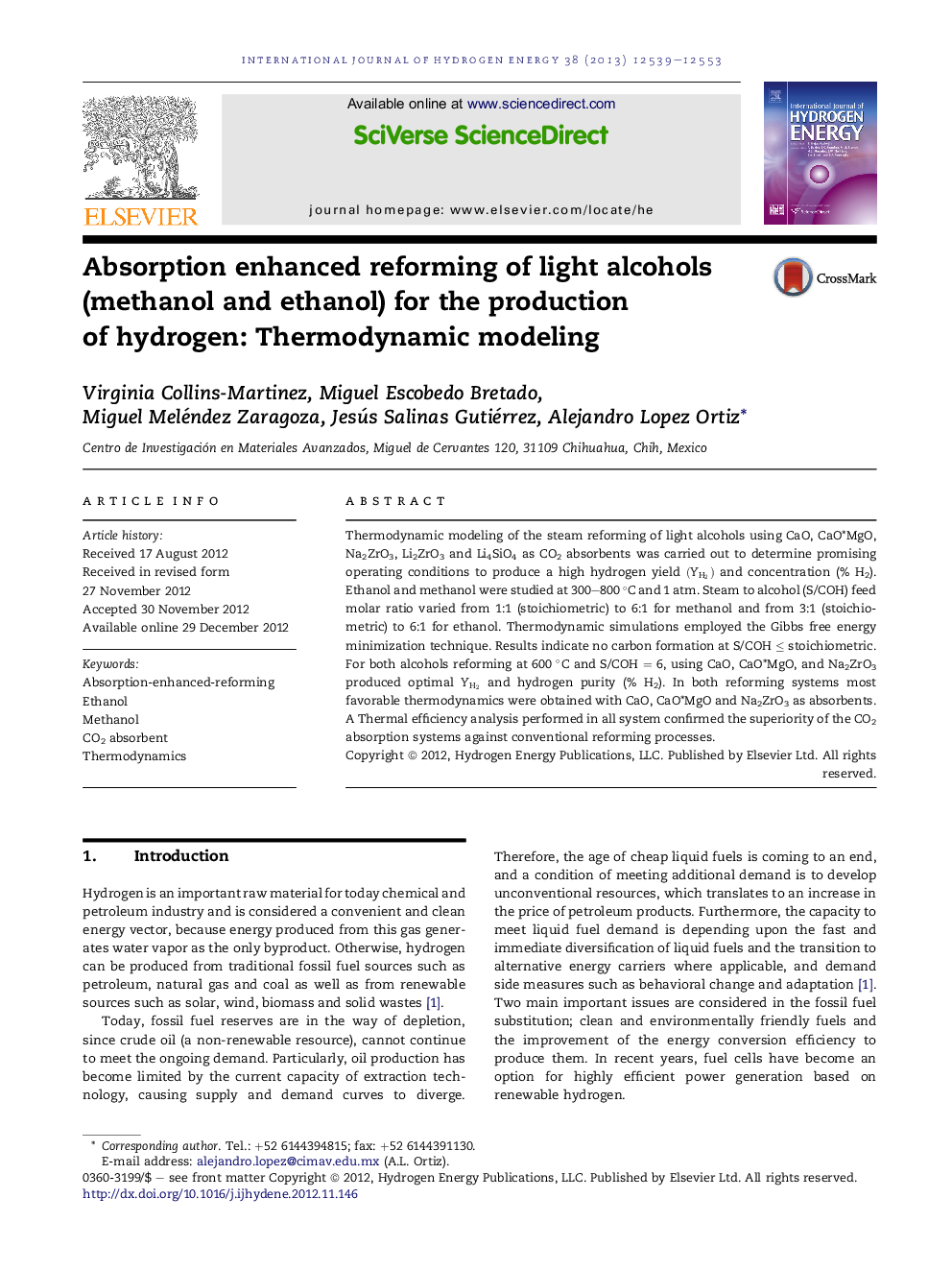| Article ID | Journal | Published Year | Pages | File Type |
|---|---|---|---|---|
| 1281485 | International Journal of Hydrogen Energy | 2013 | 15 Pages |
Thermodynamic modeling of the steam reforming of light alcohols using CaO, CaO*MgO, Na2ZrO3, Li2ZrO3 and Li4SiO4 as CO2 absorbents was carried out to determine promising operating conditions to produce a high hydrogen yield (YH2)(YH2) and concentration (% H2). Ethanol and methanol were studied at 300–800 °C and 1 atm. Steam to alcohol (S/COH) feed molar ratio varied from 1:1 (stoichiometric) to 6:1 for methanol and from 3:1 (stoichiometric) to 6:1 for ethanol. Thermodynamic simulations employed the Gibbs free energy minimization technique. Results indicate no carbon formation at S/COH ≤ stoichiometric. For both alcohols reforming at 600 °C and S/COH = 6, using CaO, CaO*MgO, and Na2ZrO3 produced optimal YH2YH2 and hydrogen purity (% H2). In both reforming systems most favorable thermodynamics were obtained with CaO, CaO*MgO and Na2ZrO3 as absorbents. A Thermal efficiency analysis performed in all system confirmed the superiority of the CO2 absorption systems against conventional reforming processes.
► Results indicate no carbon formation at S/COH ≤ stoichiometric values. ► Carbon formation is avoided with CO2 absorption vs conventional reforming operation. ► Absorbent order from high to low H2 was: CaO > CaO*MgO > Na2ZrO3>Li2ZrO3>Li4SiO4. ► The thermal efficiency is strongly related to the H2 content in the product gas. ► Na2ZrO3 and Li2ZrO3 are promising alternate absorbents compared to CaO.
